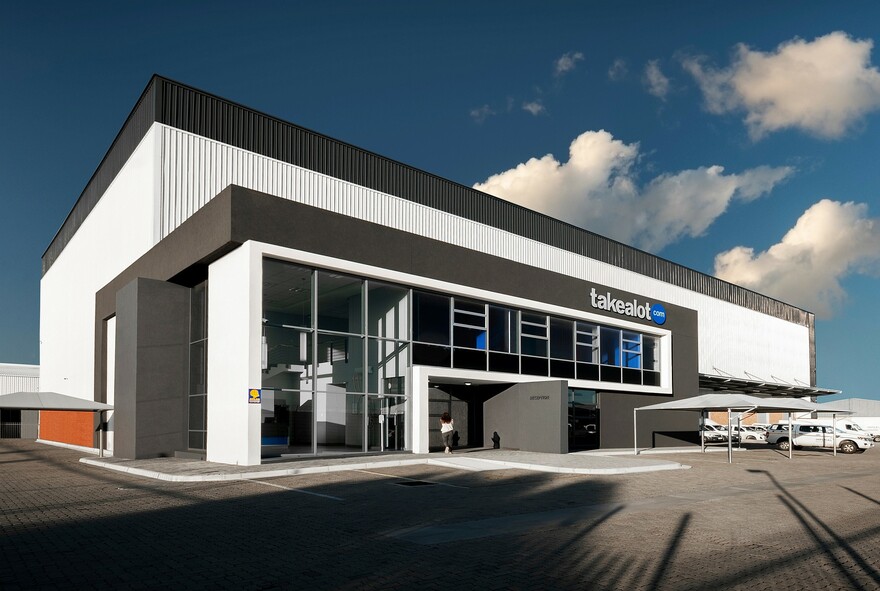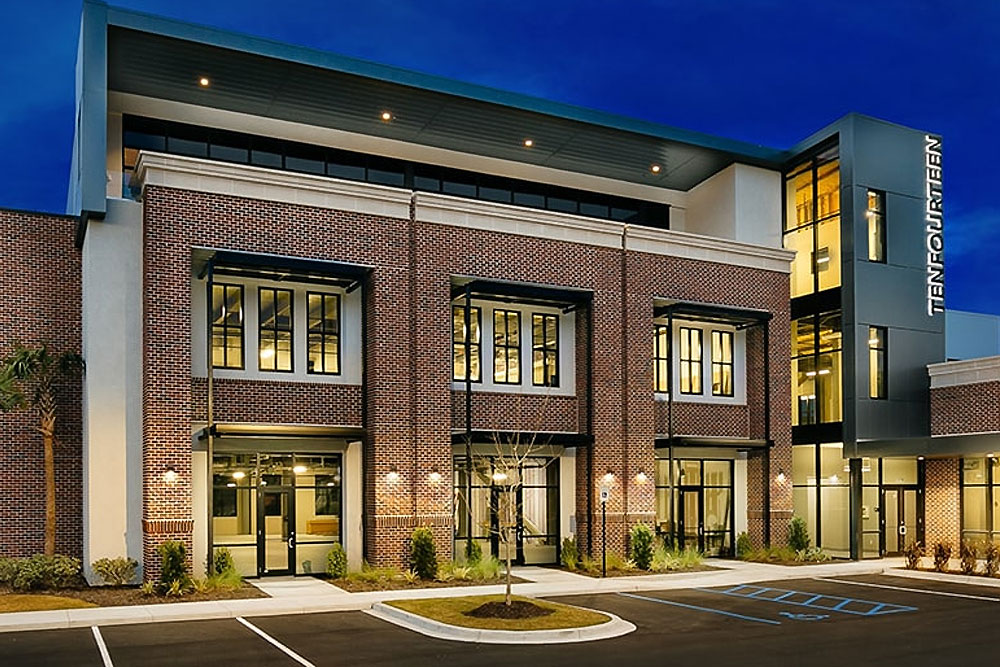Discover the Ingenious Services Provided by Commercial Architects for Your Following Task
Commercial architects play a necessary duty in forming the constructed environment. They mix capability with visual allure, producing rooms that resonate with brand identity. These experts use innovative style options, sustainable methods, and progressed innovations to improve individual experiences. Their collective method guarantees placement with client visions and functional requirements. Nonetheless, the level of their solutions frequently expands past design. The following action in recognizing exactly how these architects browse complex task needs may amaze you.
Comprehending the Duty of Commercial Architects
Although the duty of industrial architects might vary depending upon the certain task, their main function rotates around making useful and cosmetically attractive spaces for companies. These experts are tasked with comprehending the one-of-a-kind demands of each client, whether it be a retail shop, office complex, or industrial facility. They carry out extensive site analyses and work together with stakeholders to guarantee that the design lines up with business purposes and brand name identity.Commercial architects also browse different regulative demands, securing conformity with zoning laws and building regulations. Their knowledge extends to developing sustainable layouts that promote energy performance and ecological responsibility. Furthermore, they take care of the task's timeline and budget, coordinating with professionals and designers throughout the construction procedure. By blending creative thinking with technical knowledge, business architects play a crucial duty in transforming theoretical concepts into concrete truths, ultimately enhancing the capability and charm of business areas.
Innovative Layout Solutions for Special Areas
As commercial rooms significantly demand distinctiveness to attract attention in affordable markets, ingenious style options have actually become vital for architects. These professionals take advantage of their imagination and technological expertise to craft distinct environments that mirror brand name identification and improve individual experience. By integrating advanced technology and materials, commercial architects can change ordinary spaces right into captivating places that involve consumers and motivate employees.Architects utilize various approaches, such as adaptive reuse, which renews existing structures while preserving their historic relevance. They likewise discover unique layouts and multifunctional spaces that cater to varied needs, guaranteeing flexibility for future growth.Furthermore, the incorporation of biophilic layout-- bringing nature indoors-- develops welcoming atmospheres that advertise well-being - commercial architects. This focus to detail in ingenious design not just addresses aesthetic issues however additionally promotes area and cooperation. Eventually, these customized solutions allow businesses to flourish in an ever-evolving landscape, setting them aside from competitors
Lasting Design Practices
Sustainable style techniques have arised as an essential focus for business architects looking for to develop impactful designs that reverberate with environmental stewardship. These practices prioritize the use of eco-friendly resources, energy performance, and very little waste, mirroring a commitment to lowering the ecological footprint of structures. Architects integrate materials that are sustainably sourced or reused, guaranteeing that building techniques align with eco-friendly principles.Furthermore, the combination of green roofs and wall surfaces enhances biodiversity while boosting energy efficiency. Effective water monitoring systems, such as rainwater harvesting, add to sustainability by preserving water resources. Natural air flow and daylighting methods are also utilized to enhance interior atmospheres, reducing dependence on synthetic home heating and lighting.
Integrating Modern Technology in Architectural Layouts
An enhancing number of business architects are embracing innovation as a transformative component in building style. By leveraging innovative software tools such as Structure Information Modeling (BIM), architects can create in-depth 3D depictions of jobs, permitting improved visualization and cooperation among stakeholders. This modern technology helps with real-time changes, minimizing errors and streamlining the design process.Additionally, architects are incorporating clever building innovations right into their layouts, which enhance energy performance and resident convenience. Attributes such as automated illumination, climate control, and protection systems can be perfectly integrated, advertising sustainable practices and reducing functional costs.The usage of online and enhanced reality also allows clients to experience styles before building starts, offering very why not try here useful insights right into spatial connections and visual selections. Inevitably, the assimilation of technology in building styles not only fosters development however also guarantees that tasks are implemented with accuracy and lined up with contemporary demands.

Task Monitoring and Control Solutions
Effective task monitoring and sychronisation services are essential for the effective execution of commercial building tasks. These services assure that all aspects of a job, from initial style to last construction, are seamlessly incorporated. Commercial architects play a significant duty in working with in between numerous stakeholders, consisting of clients, contractors, and vendors, to maintain clear communication and positioning on task goals.By carrying out structured methods, architects can manage timelines, spending plans, and resources successfully, minimizing delays and expense overruns. They use task management software program and tools to track progression, take care of documentation, and facilitate partnership among group members.Additionally, these solutions consist of threat analysis and reduction methods, validating potential challenges are identified and dealt with proactively. The result is a streamlined process that enhances overall project effectiveness and top quality, ultimately leading to a successful outcome that fulfills the client's vision and assumptions.
Governing Compliance and Zoning Support
Effective regulative conformity and zoning help are essential for the success of any commercial task. Architects have to have a deep understanding of neighborhood guidelines and zoning legislations to direct clients through the complexities of the authorization procedure. This expertise not just assures adherence to lawful demands but additionally assists enhance project style and performance.
Navigating Local Rules
How can business architects guarantee their designs straighten with regional guidelines? By staying well-informed regarding the ever-evolving landscape of here are the findings building ordinance and regional ordinances, architects play a vital role in guaranteeing conformity. They perform complete research study to understand the specific guidelines regulating materials, security standards, and construction methods suitable per task. Working together closely with neighborhood authorities, business architects can navigate with the complexities of governing structures effectively. They also promote essential authorizations and inspections, simplifying the authorization procedure. This aggressive method not only reduces prospective lawful difficulties however likewise enhances project performance. Ultimately, their expertise in navigating local policies empowers customers to recognize their vision while sticking to all called for standards and guidelines.
Zoning Law Knowledge
Zoning legislation experience is important for industrial architects steering through the complexities of land use regulations. These architects possess comprehensive expertise of regional zoning codes, which govern residential or commercial property development, land use, and structure specifications. By understanding these policies, they Full Report assist customers browse the typically intricate authorization processes required for building jobs. Their know-how guarantees compliance with zoning legislations, decreasing the risk of project delays or legal complications.Additionally, industrial architects supply valuable aid in getting needed permits and variations, assisting in smoother communications with local authorities. They likewise supply calculated suggestions to optimize website format and take full advantage of the possibility of a home while sticking to zoning limitations. Ultimately, their zoning regulation efficiency plays an essential function in the successful understanding of business projects.
Joint Methods With Customers and Stakeholders
Effective industrial design rests on the capability to foster solid collaboration with clients and stakeholders throughout the layout procedure - commercial architects. Architects participate in open dialogues, making certain that all events' visions and requirements are integrated into the job. This collaborative method begins in the preliminary phases, where architects carry out workshops and brainstorming sessions, permitting clients to articulate their objectives and concerns.Stakeholder input is equally vital; architects typically arrange meetings with neighborhood members, regional federal governments, and other appropriate entities to collect varied viewpoints. By using visualization tools, such as 3D modeling, architects help with far better understanding and communication.This iterative comments process not only improves style top quality however additionally develops trust, resulting in even more successful outcomes. Eventually, the joint ideology of commercial architects changes concepts right into functional spaces that mirror the ambitions of customers and the more comprehensive community, making certain a harmonious relationship throughout the project lifecycle

Regularly Asked Inquiries
What Is the Common Timeline for an Industrial Style Job?
The typical timeline for a business architecture project varies, typically covering 6 to 18 months. Variables affecting this period include task intricacy, regulative approvals, and client responsiveness, affecting each phase from style to building conclusion.
How Do Commercial Architects Charge for Their Services?
Commercial architects normally bill based upon job range, complexity, and dimension. Typical charge frameworks consist of hourly rates, repaired costs, or percentage-based fees computed from the complete building cost, guaranteeing transparency and positioning with customer assumptions.
Can Commercial Architects Assist With Interior Decoration?
Commercial architects can undoubtedly aid with interior design, integrating performance and aesthetic appeals. Their experience warranties cohesive spaces that align with building vision, enhancing customer experience while meeting regulative requirements and customer objectives via cutting-edge style services.
What Types of Clients Do Commercial Architects Commonly Work With?
Commercial architects normally team up with diverse clients, consisting of services, government entities, universities, and charitable organizations (commercial architects). Each customer looks for tailored building solutions to fulfill details useful and visual requirements for their projects and settings
Exactly How Do Commercial Architects Remain Upgraded With Style Patterns?
Commercial architects stay updated with layout fads through continuous education and learning, attending industry seminars, participating in expert networks, and investigating arising modern technologies. They additionally collaborate with other experts to obtain insights right into innovative materials and layout methods.